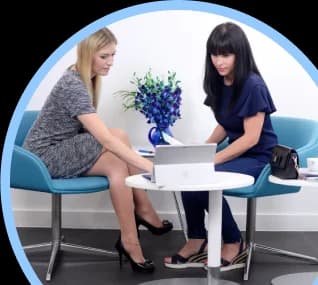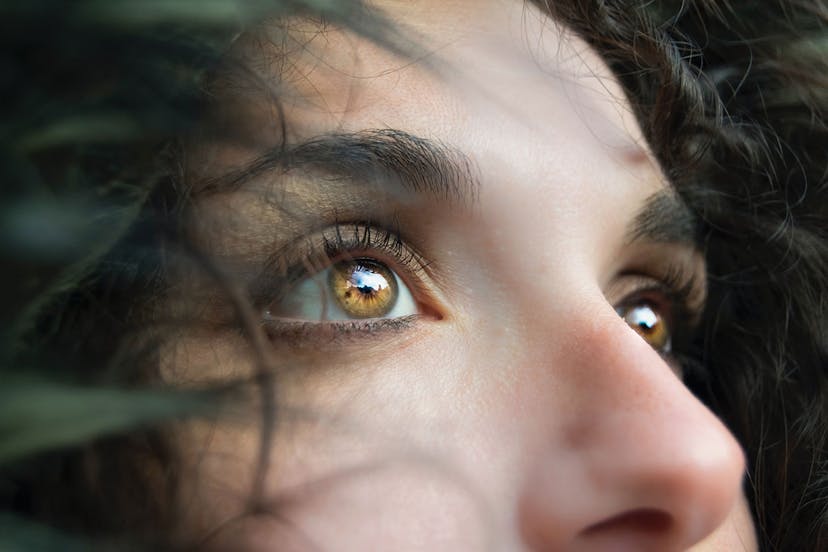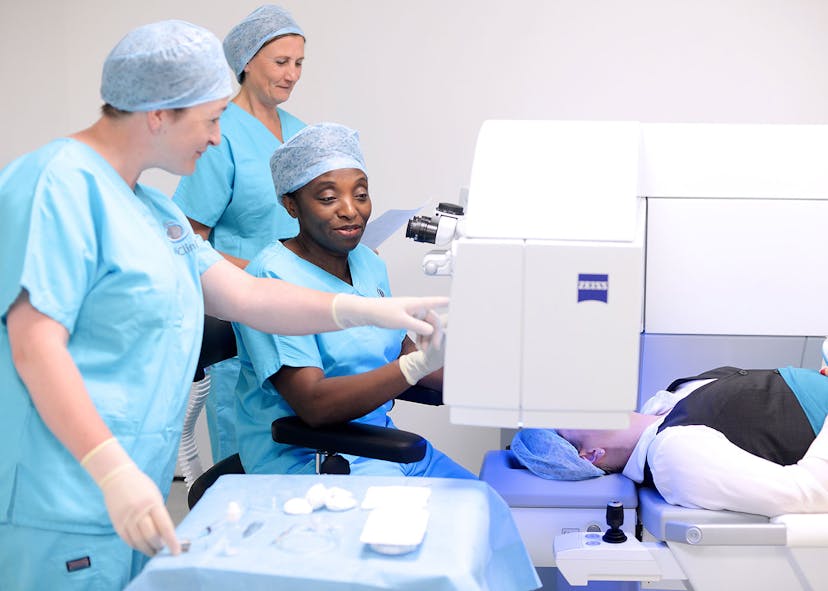
Would You Choose To Be Short-Sighted?
Short-sightedness, also known as myopia, is a common refractive error that affects the way a person sees objects in the distance. It's a condition where close-up objects appear clear while those in the distance become blurred or fuzzy. Myopia occurs when the eyeball is slightly elongated, causing light to focus in front of the retina instead of directly on it. This results in difficulty in seeing objects clearly from afar, which can impact daily activities such as driving, watching movies, or recognising people from a distance. Understanding the causes, symptoms, and available solutions for short-sightedness is crucial in managing and improving one's vision for a clearer and more comfortable daily experience.
Is It Normal To Be Short-Sighted?
Short-sightedness is considered a normal variation in visual health, as many individuals experience some degree of myopia during their lives. Myopia often develops during childhood and adolescence, and its prevalence has been increasing globally due to factors like increased near work (such as prolonged screen time) and limited outdoor activities.
People who are short-sighted often cope by using corrective measures to improve their vision and make daily tasks more manageable. Some common ways individuals manage myopia include:
Eyeglasses
Wearing prescription eyeglasses with lenses that are concave (thicker at the edges) helps to bend light properly onto the retina, correcting the focus and allowing for clear distance vision.
Contact Lenses
Many individuals with myopia prefer the convenience and aesthetics of contact lenses. Soft contact lenses can provide clear vision without the need for eyeglasses.
Refractive Surgery
Laser vision correction procedures like LASIK, PRK, or SMILE can reshape the cornea to correct myopia, reducing or eliminating the need for glasses or contact lenses.
Orthokeratology (Ortho-K)
This involves wearing specialised contact lenses overnight to temporarily reshape the cornea, providing clear vision during the day without the need for eyeglasses or lenses.
Regular Eye Exams
Routine eye examinations by an optometrist or ophthalmologist are essential for monitoring the progression of myopia, especially in children. Early detection and intervention can help manage myopia effectively.
Outdoor Activities
Spending time outdoors, particularly in natural sunlight, has been associated with a reduced risk of myopia progression in children.
Moreover, while myopia is common, it can have implications for eye health if left unmanaged, as severe myopia increases the risk of eye conditions like retinal detachment, glaucoma, and cataracts. That's why individuals with myopia are encouraged to maintain regular eye check-ups and discuss with eye care professionals the best strategies for managing their condition and preserving their long-term eye health.
Are You Short-Sighted?
Think about it. It is not normal to be short-sighted. Let’s imagine that you always had normal vision.
You can see everything clearly from the moment you wake till you go to sleep and you never have to reach for glasses or contacts to put your world in focus.
Now, let’s suppose that you have an operation or an accident or something happens to you and as a result, you have to wear the glasses or the contacts you have now in order to see clearly again.
So you would go to an eye specialist and ask them how you get your normal vision back. Imagine that the specialist tells you that you must wear glasses or contacts every day for the rest of your life.
It's unlikely that your reaction would be “Wow, that’s great. Thanks”.
You can determine if you are short-sighted (myopic) through various signs and symptoms, but the most accurate way to diagnose myopia is by having an eye examination conducted by an optometrist or ophthalmologist. Here are some common signs and ways to identify myopia:
- Blurry Distance Vision: Difficulty seeing objects clearly at a distance is a hallmark symptom of myopia. You might notice that road signs, chalkboards, or people in the distance appear blurry or out of focus.
- Squinting: People with myopia often instinctively squint to try and improve their vision by narrowing their eyelids, which temporarily changes the way light enters the eye and may help to focus objects better.
- Eyestrain: Myopia can cause eye strain, especially when you're trying to focus on distant objects for extended periods. This might manifest as headaches or general discomfort.
- Difficulty Seeing at Night: Myopia can make it challenging to see clearly in low-light conditions, such as when driving at night.
- Moving Closer: If you find yourself moving closer to screens, books, or other objects to see them clearly, it could be a sign of myopia.
- Regular Prescription Changes: If you wear eyeglasses or contact lenses, and you find that your prescription needs frequent updates for clear vision, myopia might be the cause.
- Family History: Myopia tends to run in families. If your parents or siblings are myopic, you might have a higher risk of developing it.
- Routine Eye Examination: An eye exam by an optometrist or ophthalmologist is the most reliable way to determine if you are short-sighted. During the exam, your visual acuity will be tested using an eye chart, and your eye's refraction will be measured to determine the prescription needed for clear vision.
If you experience any of these symptoms or suspect you might have myopia, it's important to schedule an eye examination. Early detection and proper management can help ensure clear vision and prevent potential complications associated with myopia.

When To Wear Glasses
By now you would have realised that glasses or contacts do not cure Myopia, they merely make it survivable.
And then when they tell you that you must come back every year to get a new prescription it is probable that you will ask “But is there any way I can have my normal vision back and not have to bother every day with glasses or contacts?” They would answer “Yes, you can have SMILE laser and in fact, it’s safer than soft contact lens wear.
So if a shortsighted person really had a choice they would choose normal vision over short-sightedness. Because shortsightedness creeps up on you over the years from a young age, it can seem that it is OK to live with glasses or contacts but in fact, it is not.
You should consider wearing glasses when you experience vision problems that impact your daily activities, such as reading, driving, working on a computer, or watching TV. Here are some common scenarios when wearing glasses might be beneficial:
- Blurry Vision: If you're experiencing blurry vision, whether up close or at a distance, glasses can help correct this issue and improve your visual clarity.
- Difficulty Reading: If you find it challenging to read small print or see details up close, reading glasses (or multifocal lenses) can make reading more comfortable.
- Driving: If you have trouble seeing road signs, recognising distant objects, or driving at night due to poor vision, glasses can enhance your safety while driving.
- Computer Use: If you spend a lot of time working on a computer, glasses with an appropriate prescription can help reduce eye strain and enhance your comfort.
- Watching TV: If you have trouble seeing the details on the TV screen or experience eye fatigue while watching, wearing glasses can make your viewing experience more enjoyable.
- Headaches or Eyestrain: Frequent headaches, eye strain, or discomfort can be indicative of uncorrected vision problems. Glasses can alleviate these symptoms.
- Astigmatism or Presbyopia: If you have astigmatism (blurred or distorted vision) or presbyopia (difficulty focusing on close objects as you age), glasses with specialised lenses can address these issues.
- Special Activities: If you engage in hobbies or activities that require clear vision, such as sports, crafts, or playing a musical instrument, specialised glasses can enhance your performance and enjoyment.
- Following an Eye Exam: If an eye care professional determines that you have a refractive error (myopia, hyperopia, astigmatism, or presbyopia) during an eye exam, they will prescribe glasses to help correct your vision.
Furthermore, the decision to wear glasses depends on your visual needs and comfort. If you're experiencing any vision-related challenges, it's best to schedule an eye examination with an optometrist or ophthalmologist. They can assess your vision, prescribe the appropriate corrective lenses if needed, and advise you on the best approach to address your vision concerns.

Laser Eye Surgery For Short-Sightedness
Modern laser eye surgery is now so safe that it is safer than contact lens wear over the lifetime of a shortsighted person.
It even can be adjusted if required (rarely) every decade or so if the focus shifted. And it brings normal vision, the vision we are all supposed to have.
Make that no-brainer decision now and get SMILE laser correction. Be normal.
Laser eye surgery, such as LASIK (Laser-Assisted in Situ Keratomileusis), PRK (Photorefractive Keratectomy), or SMILE (Small Incision Lenticule Extraction), can effectively correct short-sightedness (myopia) by reshaping the cornea, which is the clear front surface of the eye. Here's how these procedures work:
Reshaping the Cornea
Myopia occurs when the eyeball is slightly elongated, causing light to focus in front of the retina rather than directly on it. This results in blurry distance vision. Laser eye surgery aims to address this by reshaping the cornea to redirect light properly onto the retina.
Creating a Flatter Cornea
For myopia correction, the laser removes a small amount of corneal tissue from the central area. This flattens the cornea's curvature, allowing light to focus directly onto the retina.
Customised Treatment
Before the surgery, detailed measurements of your eye's structure are taken to create a personalised treatment plan. The surgeon uses these measurements to guide the laser in reshaping the cornea precisely.
LASIK Procedure
In LASIK, a thin flap is created on the cornea's surface. This flap is lifted, and the underlying corneal tissue is reshaped using an excimer laser. The flap is then repositioned, acting as a natural bandage. The procedure is quick and relatively painless.
PRK Procedure
In PRK, the outer layer of the cornea (epithelium) is gently removed to expose the corneal tissue underneath. The laser then reshapes the tissue, and the epithelium regenerates naturally over a few days.
SMILE Procedure
SMILE is a minimally invasive procedure where a small lenticule (tissue disc) is created within the cornea using a femtosecond laser. This lenticule is then extracted through a tiny incision, reshaping the cornea to correct myopia.
Healing and Recovery
After the procedure, the cornea gradually heals and stabilises, resulting in clearer vision. Most patients experience improved vision within a few days to a week.
Long-Lasting Results
Laser eye surgery can provide long-lasting results, often allowing patients to reduce or eliminate their dependence on glasses or contact lenses for distance vision.

A Professional Eye Clinic
Here at My iClinic, we offer a FREE eye scan for people interested in finding out more about laser eye surgery.
Find out more by Speaking to our team









